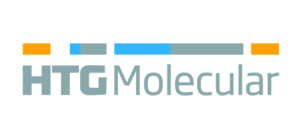HTG Molecular Diagnostics, Inc. (Nasdaq:HTGM), a provider of instruments, reagents, and services for molecular profiling applications, today announced the United States Patent and Trademark Office has issued two U.S. Patents covering HTG’s technology and applications of its technology.
 The first patent, U.S. Patent 9,758,829 entitled Molecular Malignancy in Melanocytic Lesions, was issued to HTG and the John Wayne Cancer Institute, who co-invented the technology. It claims a method of treating an indeterminate or atypical nevi that involves measuring the nucleic acid expression of certain biomarkers, including MAGEA2, PRAME, PDIA4, NR4A1, PDLIM7, B4GALT1, SAT1, RUNX1, and SOCS3. The patent will expire in June 2033.
The first patent, U.S. Patent 9,758,829 entitled Molecular Malignancy in Melanocytic Lesions, was issued to HTG and the John Wayne Cancer Institute, who co-invented the technology. It claims a method of treating an indeterminate or atypical nevi that involves measuring the nucleic acid expression of certain biomarkers, including MAGEA2, PRAME, PDIA4, NR4A1, PDLIM7, B4GALT1, SAT1, RUNX1, and SOCS3. The patent will expire in June 2033.
The second patent, U.S. Patent No. 9,765,385 entitled Nuclease Protection Methods for Detection of Nucleotide Variants, claims a nuclease-protection-based method for targeted detection of single nucleotide variants. This patent will expire in October 2033.
“The newly issued patents substantiate the proprietary nature of our business and represent an important step in protecting our technology and its applications,” stated TJ Johnson, Chief Executive Officer of HTG. “As we grow, we will continue to pursue additional protection around our instrument portfolio and our testing methods and their applications in the U.S. and in other regions and countries.”
About HTG:
Headquartered in Tucson, Arizona, the mission of HTG Molecular Diagnostics (HTG) is to empower precision medicine at the local level. The company’s HTG EdgeSeq technology, which automates highly multiplexed molecular profiling of minute samples for next-generation sequencing, received its first U.S. patent in 2014. Continuous improvements led to the 2017 launch of HTG’s new direct-target sequencing chemistry for DNA analysis offered in the company’s VERI/O services laboratory. Additional information is available at www.htgmolecular.com.
Safe Harbor Statement
Statements contained in this press release regarding matters that are not historical facts are “forward-looking statements” within the meaning of the Private Securities Litigation Reform Act of 1995, including statements about the timing of expiration dates of our newly issued patents, which are subject to timely annuity fee payments and patent term extension or adjustments, our plan to pursue additional intellectual property protection in the U.S. and in other regions and countries, and the benefits and uses of our patented technologies. Words such as “believes,” “anticipates,” “plans,” “expects,” “intends,” “will,” “goal,” “potential” and similar expressions are intended to identify forward-looking statements, though not all forward-looking statements necessarily contain these identifying words. These forward-looking statements are based upon management’s current expectations, are subject to known and unknown risks, and involve assumptions that may never materialize or may prove to be incorrect. Actual results and the timing of events could differ materially from those anticipated in such forward-looking statements as a result of various risks and uncertainties, including, without limitation, our ability to successfully develop, market and/or commercialize new methods, technologies and/or products, including our patented technologies. These and other factors are described in greater detail in our filings with the Securities and Exchange Commission, including without limitation our Quarterly Report on Form 10‑Q for the quarter ended June 30, 2017. All forward-looking statements contained in this press release speak only as of the date on which they were made, and we undertake no obligation to update such statements to reflect events that occur or circumstances that exist after the date on which they were made.
FOR FURTHER INFORMATION CONTACT:
Ashley Robinson
LifeSci Advisors, LLC
617-775-5956
arr@lifesciadvisors.com
TJ Johnson
President/CEO
HTG Molecular Diagnostics
520-547-2827 x130
tjjohnson@htgmolecular.com
